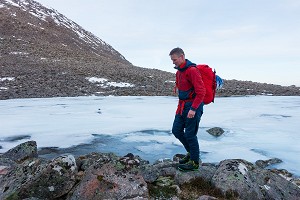
A number of brands these days make clothing that combines an inner lining for warmth and wicking, with a weather-resisting outer, giving you an item that can be worn across a broad range of temperatures, conditions, and activity levels. Among this sort of softshell, Rab's Vapour-Rise has been on the scene longer than most. I first used it around 13 years ago, on a trip to the Rwenzori, Kilimanjaro and Mount Kenya. From the humid and rainy mid altitudes to the dry cold of 5000m+, on that one trip it really proved its versatility as a do-it-all layer. I've since worn Vapour-Rise a whole lot in the UK, whether that's for drizzly autumn hillwalking, windy summer mountain rock, or winter mountaineering, so it's fair to say I'm a long-term user.
For 2020 Rab have completely revamped the range. But with several alternatives now on the market that perform a similar role - Mountain Equipment's Kinesis for instance - Vapour-Rise is up against some capable competition. So how do I rate the new generation VR?
The revised range features three new jackets, each a different weight and for a different use, and two models of trousers (see the range overview here). For the last few months I've been using all three of the jackets:
- VR Summit Jacket - warmest and most alpine/winter worthy in the range
- VR Alpine Light Jacket - light-to-midweight, arguably the most versatile
- VR Ridgeline Jacket - the fast-n-light minimalist
Despite the competition, and after all these years, I think the VR concept is still a strong one. Why carry a separate inner and outer layer where one will do the job? While separates clearly offer more options, the key benefit of Vapour-Rise is its simplicity. This is something to wear all day, whatever the level of activity, without forever stopping to add or remove layers.
The new range of three hangs together really well, covering between them everything from running to alpine/winter climbing. Whether you're a climber or a hillwalker, there's a Vapour-Rise jacket to suit most occasions. However, I do feel some of the details could be better - minor niggles with cut for instance.
At present only the VR Summit Jacket is available in both men's and women's fit, but Rab aim to add women's versions of the other two jackets next year.
VR Ridgeline Jacket - £120
A simple cut, stripped-back feature set and thin fabrics make this the lightweight of the range, a minimalist softshell designed for breathability on the move. I'd consider this as primarily a 2-season jacket, meaning summer and the warmer bits of spring and autumn, and I've found it ideal as a windproof outer for hillwalking, without getting too hot when you're working hard. It'd be equally useful for cold weather running too, and it's compact enough to squeeze into a waist pack. But I can't help thinking that the tailoring could have been sharpened up.
Weight
At just 267g in a size Large (my weight), the Ridgeline is a real ultralight piece, and well suited to weight conscious uses such as hillwalking, backpacking and running. Being so skimpy - you're not likely to find many two-layer softshells that are lighter - it'll come as no surprise that it offers only very minimal insulation.
Fit
We're all built to different lines, so the best advice is to try this on for yourself and make your own judgement on the fit. On the strength of my experience with the VR Ridgeline I suspect the cut would best suit someone who's quite broad in the body but not particularly chunky in the arms - perhaps neither your classic climber's nor runner's builds. On me the fit in my usual size Large is roomy in the body (and I'm not skinny), especially around the midriff. A more fitted cut would arguably have been more appropriate to a top of this weight and athletic remit, since it's likely to be worn as only the second layer over a baselayer or T-shirt, rather than being put on over bulkier midlayers. The spare space makes it a bit 'flappy' in the wind, and when running. Perhaps there's also something about the two-part construction, and the drape of the lightweight outer, that gives the Ridgeline a comparatively baggy look - something all the VR jackets have in common, to be fair.
But at the same time I find it relatively tight in the arms and across the back of the shoulders. The sleeves can only just roll up over my forearms, and there's quite a bit of restriction when the elbows are fully bent. Though the inner is quite stretchy, the two layers together are considerably less so, and I think this exacerbates the tightness at the elbow, whereas in something more giving like a fleece top you might notice it less. Hem lift is quite an issue when the arms are raised, and the jacket tends to pull up out of a harness, so for me the VR Ridgeline isn't ideal for climbing or scrambling. Length in the body is comfortably below the waist though, so the jacket feels warm at the midriff when you're not lifting the hem.
A relaxed fit at the cuffs allows them to be pulled over gloves - made easier by the addition of an elastic insert. This insert doesn't really serve much other function since the cuff is already loose. With no adjustment tab, the fit cannot be tightened onto your wrist, so things could get a bit draughty here in high wind. It's also hard to roll up the sleeves over my forearms.
Fabric
Vapour-Rise is a two-layer system, with a wicking/insulating inner combined with a weather-shedding outer. The principle is to create a 'microclimate' between these layers, keeping you warm and dry. I guess much the same thing happens if you're wearing two separate individual layers, but I've always thought there's something neat and effective about the two-in-one system, and it's not often when using Vapour-Rise (or similar) that I've found myself wishing I'd brought a separate micro fleece and windproof instead.
As with the Alpine Light (see below) the outer is made from Pertex Quantum Air, a very light polyamide fabric at just 37g/m². Though it keeps out the worst of a stiff breeze, this fabric remains pretty air permeable, so it breathes well and you don't boil in the bag as soon as you start working up a sweat. With a decent DWR, the outer shrugs off light rain with ease, so on drizzly on-off days you can generally wear it all the time, only resorting to a full shell when the rain gets heavy or the wind grows really biting.
The drop liner uses two different sorts of polyester fabric, VR Wicking (102g/m²) and VR Airflow (75g/m²). These do what they say on the tin - Airflow is the lighter, more open and more breathable of the two, while Wicking is thicker, heavier and has a more closed construction, and thus offers a bit more warmth. On the Ridgeline it's Airflow across most of the body, the back and the underarms, while you get Wicking around the hem, the collar, and over the chest. This zoning works well in a jacket designed for high-aerobic activity, tilting more towards breathability than warmth.
Design
Minimalism is the name of the game here, and I think Rab have judged the feature set well overall.
The YKK Vislon front zip feels easily robust enough for a top of this nature, without being over chunky. It's got only a single zipper, and a small anti-snag draught excluding strip.
In keeping with the running feel of the VR Ridgeline, there's no hood here. Brands seem to stick a hood on practically every item these days, but once you start layering several over one another you can end up with a surfeit. Though a hood increases the versatility and protection on offer from a softshell that might function as either a jacket or a midlayer, I'm increasingly coming around to the idea of reducing the number of excess hoods in my layering system. I like the low-ish collar on the VR Ridgeline, and since this isn't really a winter/mountain jacket I have not yet found myself missing the hood.
With thin jackets like this it's good to have a stow pocket for easier packing into a small rucksack, or to hang off your harness on longer climbs just in case; I think Rab have missed a trick by not including this feature here. It might be argued that this is a layer designed to be worn, rather than carried; but of course however light your softshell, there'll be times when you'll be too hot to wear it.
Its single small zipped chest pocket is, however, the ideal size for a smartphone or a couple of cereal bars - and given the general character of the Ridgeline, I don't think it needs more pockets, or somewhere to put your hands.
The elastic hem adjustment is a slightly odd three-quarter style; I'm not clear if this offers any benefit over full or half, since you're elastic-free only on one side at the front of the body. The adjuster is one-handed, and the spare elastic tail is directed up inside the jacket to avoid dangling. However since it's all running to one end you do get an awful lot of tail when the jacket is cinched in tight; a toggle on each side would potentially be neater in that regard.
Rab say:
As the lightest and most breathable piece in our re-engineered Vapour-Rise™ range, the VR Ridgeline Jacket is built for comfort when moving fast in the mountains.
The VR Ridgeline Jacket is designed to maximise airflow for energetic hikes, fast-paced scrambles and highly physical mountain recreation. The outer is built from lightweight Pertex® Quantum Air for the ideal active balance between air permeability and wind resistance. The softshell jacket also uses a body-mapped combination of fast-wicking brushed polyester insulation and mesh lining for extra comfort when working hard. Equipped with a DWR coating for additional weatherproofing, it features a collar which has been designed to fit comfortably with both climbing and ski helmets. It also features a single chest pocket for valuables, a lightweight full-length YKK® front zip, an adjustable hem and elasticated cuffs.
- Weight: 267g size L (our weight)
- Sizes: S-XXL (men) No women's version
- Shaped collar for improved fit with helmets
- Body mapped fast-wicking lining for comfort
- Wind resistant and highly breathable Pertex Quantum Air shell fabric
- YKK® single chest valuables pocket
- Lightweight full length front YKK® zip
- Lightweight elasticated cuffs and adjustable hem
- Centre Back: 80cm (Size L)
- Main Fabric: Pertex Quantum Air, 37g/m², with DWR. Air Perm; 10-15cfm
- Lining: VR Airflow (75g/m²), with VR Wicking (102g/m²)
- Composition: 100% polyamide outer with 100% polyester lining (55% recycled) and 100% polyester mesh
For more info see rab.equipment
VR Alpine Light Jacket - £140
As the midweight in the new VR lineup, the Alpine Light is arguably the most versatile in terms of seasonality and uses. This is a light softshell layer that you can put on over a t-shirt in the morning and then wear all day, whether you're climbing or walking, moving or stationary, supplementing with extra layers over the top where necessary. A more mountain-oriented cut and feature set make this more of a generalist than the light-n-fast Ridgeline, and it's equally useful for rock climbing, mountaineering, year-round hillwalking, and general outdoor wear.
Weight
Moving up the weight scale a little, the Alpine Light is still pretty light (the clue is in the name), weighing in at only 321g in size Large. As well as having more features, there's a bit more heft to it than the Ridgeline, and it's a definite step up in terms of warmth.
Fit
As with the Ridgeline, the cut in the body is roomier than I think a jacket of this remit strictly needs to be. This is really the sort of thing that I'd wear over only a base layer, yet in my standard size L there's space in the body to layer over a microfleece, so I have spare room and it's a bit baggy. Users built on generous lines may not have to worry that the fit is too 'athletic'.
The VR Alpine Light feels less restrictive around the arms than the Ridgeline, making it more viable as a climbing and mountaineering piece. However I do find it a bit close at the elbow nevertheless, and again it's hard to pull the sleeves up over my forearms (on a wear-all-day garment it's nice to have that option). Thankfully high reaches are unimpeded, and and while I do get a fair amount of hem lift when raising my arms, this isn't usually enough to pull the jacket out from under a harness. Having used the jacket on several cragging days I'd say it is well enough suited to climbing, though for me a bit more room in the elbows and underarms would have made it better still.
Again, body length is decent, so no draughts around the waist; but unlike the Ridgeline, I can imagine myself missing the lack of a drop hem at the rear on this more mountain-oriented jacket.
The cuff design mirrors the Ridgeline's, so I'll repeat myself: A relaxed fit at the cuffs allows them to be pulled over moderately bulky gloves - made easier by the addition of an elastic insert. This insert doesn't really serve much other function since the cuff is already loose. With no adjustment tab, the fit cannot be tightened onto your wrist, so things could get a bit breezy here in high wind. I've also found that when climbing I've had to roll the sleeves back a bit to keep them fully off the heel of my hand, whereas with a tab they could have been held back without rolling.
Fabric
The Alpine Light uses the same outer and inner fabric as the Ridgeline, though the inside is zoned differently to give you more warmth. Its outer is made from Pertex Quantum Air, a very light polyamide fabric at just 37g/m². As I said above, though it keeps out the worst of a stiff breeze very effectively, this fabric remains pretty air permeable, so it breathes well and you don't boil in the bag as soon as you start working up a sweat. With a decent DWR, the outer shrugs off light rain with ease, so on drizzly on-off days you can generally wear it all the time, only resorting to a full shell when the rain gets heavy or the wind grows really biting.
Again the drop liner is made from two different sorts of polyester fabric, VR Wicking (102g/m²) and VR Airflow (75g/m²). The lighter and more open Airflow gives you maximum breathability where it's most needed, under the arms and in the hood, while Rab have used the thicker, warmer Wicking fabric for the majority of the jacket (back, chest, shoulders and around the waist). Since the zoning here is aimed slightly more towards insulation than breathability, the Alpine Light feels warmer and more substantial than the Ridgeline, but it's going to feel that bit less breathable. I'd pick the Ridgeline for running every time, while the Alpine Light is clearly better suited to hillwalking and climbing in slightly colder conditions.
Design
I'm broadly in favour of the Alpine Light's two big chest pockets, which are positioned well up out of harness and rucksack belt range, and have enough space for light gloves, hat etc. These are the only pockets on the jacket, and the one drawback of not having a smaller chest pocket is that they're actually a bit too big to hold a phone without it sitting too low over the body and bouncing around annoyingly. When climbing I'll often want to carry my phone on my person rather than left in my pack, so it's warm and safe, readily to hand in an emergency, and available to take photos or check the route on OS Maps or the Rockfax App; a phone-friendly inner pocket/insert could have been a sensible addition here. On the plus side, these big pockets can be opened right up as very effective vents when you're working up a sweat on the move.
Its chunky main zip is double-ended, for easier belay access, and backed with a little draught-excluding strip. The Ridgeline's fairly gimmicky 3/4 drawcord is repeated on the Alpine Light, and at risk of repeating myself I can't see any benefit in this arrangement, while the disadvantage is that with a single toggle you end up with a huge tail of elastic when the hem is fully tightened - so much so that it risks slipping out and hanging free despite its internal retainer.
Unlike the Ridgeline, the Alpine Light comes with a hood. This is quite minimalist, with a simple velcro tab at the rear to give some degree of size control, and a little bit of stretch at the sides. To help hold its shape in wind the hood has a small semi-stiffened brim, but without a drawcord you can't get a close seal around the face so if it's very blowy then the hood will inevitably billow about. It's also a bit small to fit comfortably over a helmet, without lifting the hem of the jacket and really limiting head movement. Being a soft, thin hood, if you need to use it with a helmet then it's perhaps a bit better worn underneath.
Rab say:
As the middle of our three new Vapour-Rise™ layers, the VR Alpine Light Jacket strikes the perfect balance between insulation, breathability and protection. It uses a shell made from lightweight Pertex® Quantum Air, alongside a combination of VR Wicking and VR Airflow polyester linings to transport excess moisture away from the body. It then creates a thermoregulating 'microclimate' between the layers, which keeps the wearer warm as well as dry. In addition to a belay-friendly double-ended front zip, the VR Alpine Light Jacket features a pair of oversized zipped chest pockets for additional venting and a lightweight elasticated hood and cuffs to help keep the weight down to just 312g.
Our VR Alpine Light Jacket's approach to insulation is built on two years of applied field testing with the Association of Mountaineering Instructors. Warm, dry and uniquely versatile, it is an all-weather mountain layer you need never take off.
- Weight: 321g size L (our weight)
- Sizes: S-XXL (men) No women's version
- Lightweight elasticated hood for protection
- Body mapped fast-wicking lining for comfort
- Wind resistant and highly breathable Pertex Quantum Air shell fabric
- YKK® oversize chest pockets provide storage and venting
- YKK vislon double ended full length front zip
- Lightweight elasticated cuffs and adjustable hem
- Main Fabric: Pertex Quantum Air, 37g/m², with DWR. Air Perm; 10-15cfm
- Lining: VR Wicking (102g/m²), with VR Airflow (75g/m²)
- Composition: 100% polyamide outer with 100% polyester lining (55% recycled) and 100% polyester mesh
For more info see rab.equipment
VR Summit Jacket - £160
If you're heading out winter hillwalking, winter climbing, or up snowy peaks in the Alps, this is the Vapour-Rise jacket to go for. Warmer, thicker and more substantial than the others, the Summit also has more of a winter-oriented feature set, and a cut that's adapted to climbing. While it's really too snug for typical spring and summer uses, this is an excellent jacket for cold windy days at the crag, and with the chilly season on the way it's the one I'll be using most regularly in the coming months.
For those who'd like a comparison with an existing product, in terms of weight, warmth and general remit, the Summit Jacket is almost exactly on a par with Mountain Equipment's Kinesis Jacket. Which of these you prefer may simply come down to which fits you better.
Weight
Surprisingly, despite its greater number of features and more substantial feel, the Summit (352g, size L) isn't actually a lot heavier than the Alpine Light (321g). I'm not sure how Rab managed it.
Fit
This is currently the only jacket of the three in the VR range to be available in both a men's and a women's fit, while the others only come in men's.
As with the others in the VR range, the tailoring is generous rather than sculpted, leaving plenty of space underneath if you want to wear it on top of a couple of under layers; in the case of the Summit this makes sense, since it's more of a winter jacket than its skimpier cousins. However I do still find it a bit baggy around the middle. There's decent length in the hem to keep the midriff snug, and as with the Alpine Light the cut under the arms allows me to reach up without seriously lifting the hem. When climbing, the jacket generally stays put under a harness, although I have had to tuck it back in a couple of times.
There's plenty of length in the arms too, and enough space at the cuffs to fit over bulky winter gloves. Better than the rest of the range, however, you get proper hook-and-loop tabs at the wrist here, so the cuffs can be tightened up to keep the wind out, and to stay off your hand when climbing. In addition the sleeves can be pulled up easily over your forearms, which on a jacket this warm is occasionally handy to help you cool down on the go. Overall I find it a more satisfactory cuff than on the Alpine Light.
Fabric
As you'd expect of the comparative heavyweight of the range, the Summit is tweaked more towards warmth and weather protection than its cousins.
Again Rab have used Pertex Quantum Air for the outer, but here it's a thicker version (49g/m² vs 37g/m²), and it has a ripstop pattern for added durability. It feels that bit tougher than the shell of the Alpine Light or the Ridgeline, so it's better suited to the rough and tumble of climbing and mountaineering; I've not yet managed to make any scuffs or tears. It's also a little less flappy and a bit more protective-feeling in the wind - though inevitably, being so light, it does still billow about more than your average hard shell. Again, the fabric feels good and breathable for comfort on the move, and its DWR makes it sufficiently shower-resistant in mixed conditions, so you don't need to stop to find a waterproof shell if it's only raining lightly.
Its brushed polyester VR Warm lining is the same weight throughout, 83g/m², making it heavier than the other two jackets overall. Being comparatively thick and fleecy it's also a better insulator, so it feels a lot more snug than the lining on either the Ridgeline or the Alpine Light. For its weight, this is a warm jacket when you're stationary, but one that still manages to be comfy when you're active. To make the jacket less clingy when slipping it on over other layers, the lining is reversed in a strip running from the shoulder down the length of the upper arm, giving you the smooth side of the fabric rather than the furry side. With plenty of stretch (more than the shell), the lining doesn't feel restrictive.
Mid autumn at Polney - a day of sun and passing showers. I wear the Summit Jacket over a single T-shirt, and though I'm almost too warm when climbing in the sun, the inside of the jacket doesn't feel sweaty on the move. Rain blows through, and everything's moist, but the water beads nicely on the face fabric and I don't regret not having brought a shell. I'm belaying for a long while when the low sun dips behind the hill, and the temperature instantly drops. I can barely feel my fingers to second the pitch, but I haven't yet felt the chill or reached for the belay jacket. It's quite a versatile layer, this full weight Vapour-Rise.
Design
The Summit's complement of three zipped pockets means plenty of places to carry gloves etc. While they're not as spacious as the Alpine Light's, or positioned as high on the body, the two handwarmer pockets are placed just up above the line of a harness or rucksack hip belt, so they stay usable. With a mesh lining, they can serve as vents if needed. Above is a single smaller chest pocket, which I like, since this is where I tend to carry my phone.
Its chunky YKK Vislon main zip is backed with a wide draught-excluding strip, and for easier belay access you get a double zipper. One slight niggle here is that, with no popper to hold things together, the bottom zip can start to creep when you pull the hem in tight, slowly opening the jacket from the bottom. The full-length elastic cord gives a closer fit at the hem than the 3/4 length of the Alpine Light, and with one-handed, glove-friendly adjusters on each side you don't end up with a single excess tail as on the lighter jacket.
While the hood is described as helmet compatible, this is a bit of a stretch on me. Yes it fits over a helmet, but in my case only just, and in doing so it pulls up the hem of the jacket, and restricts head movement. The success of the helmet compatibility may partly depend how long your neck is (I don't think mine is longer than average), and since everyone is built different it'd be worth trying the jacket with a helmet once the shops are open. As with the Alpine Light's hood, if you need to use it with a helmet then it's perhaps a bit better worn underneath.
With the Summit's hood you do at least get full adjustability, with two concealed drawcords and a rear velcro tab, and there's a little bit of structure in the brim, too. This arrangement gives you a closer, more draught-excluding fit around the face than in the Alpine Light, which befits the more wintry feel of the Summit. With the hood down, the collar sits high to give protective cover around the neck. I've found the hood works well on a helmet-free head.
Rab say:
As the warmest piece in our new Vapour-Rise™ collection, the VR Summit Jacket is perfect for a range of winter activities, from skiing and ice climbing to cold-weather mountaineering. It features our latest Vapour-Rise™ technology, which uses a fast-wicking brushed polyester lining inside a highly breathable Pertex® Quantum Air shell to keep you dry and comfortable between periods of exertion and moments of rest. To help maximise its breadth of mountain applications, it also features a weatherproof DWR coating and an adjustable helmet-compatible hood with stiffened peak. The adjustable hem and cuffs help tailor the fit, the secure handwarmer pockets are elevated to stay clear of a climbing harness, and the full-length YKK VISLON® double-ended front zip makes belaying a breeze.
With its advanced Vapour-Rise™ system, our VR Summit winter softshell jacket does the work of several separate garments, providing outstanding all-weather comfort for cold mountain activities.
- Weight: 352g size L (our weight)
- Sizes: S-XXL (men) 8-16 (women)
- Helmet compatible hood with drawcord adjustment and stiffened peak
- Brushed fast-wicking lining for comfort and warmth
- Wind resistant and highly breathable Pertex Quantum Air shell fabric
- High YKK hand pockets and YKK® chest pocket
- YKK vislon double ended full length front zip
- Fully adjustable hem and cuffs.
- Main Fabric: Pertex Quantum Air, 49g/m², with DWR. Air Perm; 10-15cfm
- Lining: VR Warm lining (83g/m²)
- Composition: 100% polyamide outer with 100% polyester lining
For more info see rab.equipment






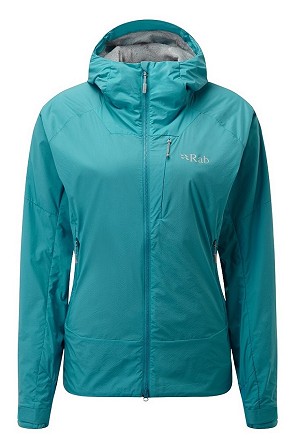
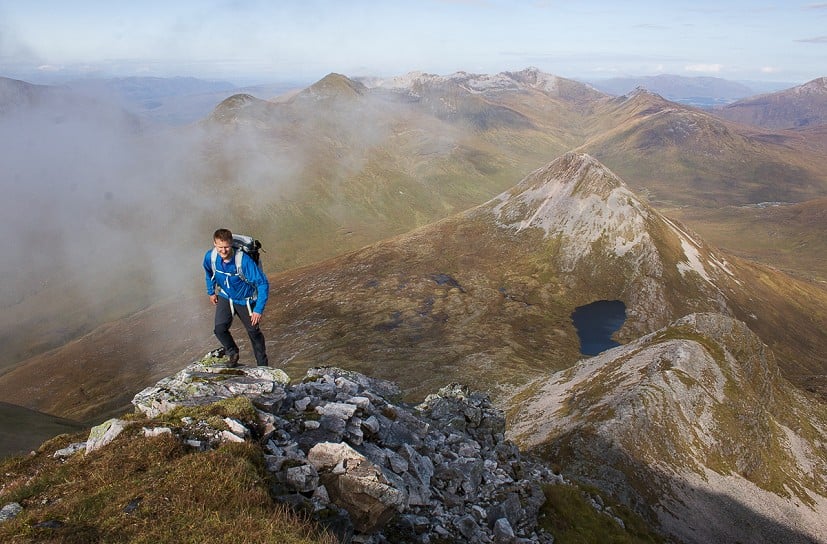

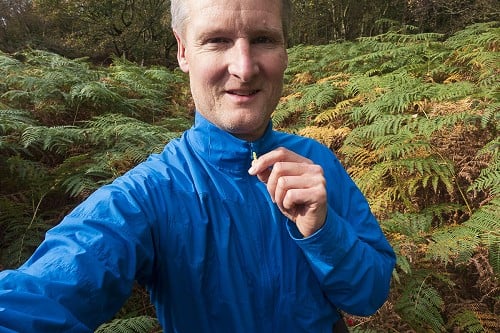
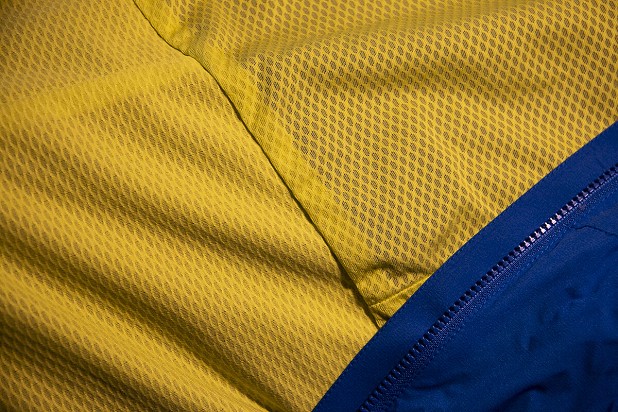
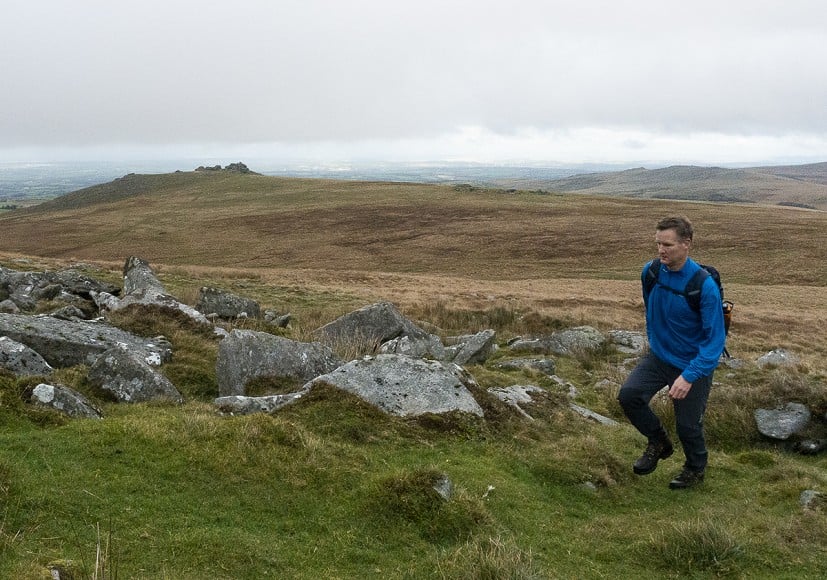
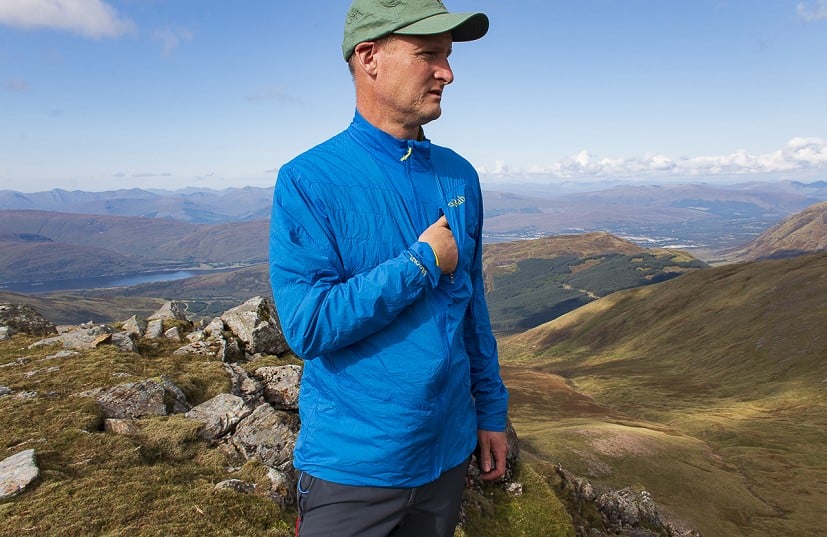
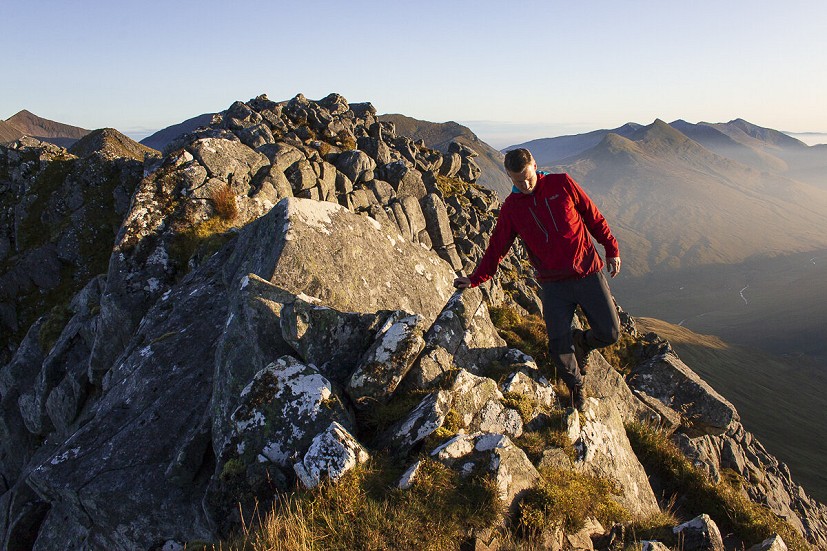
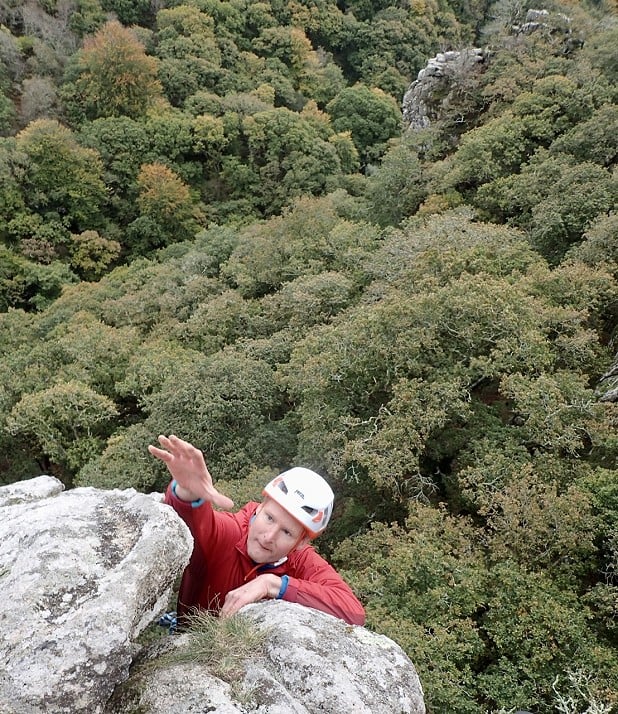
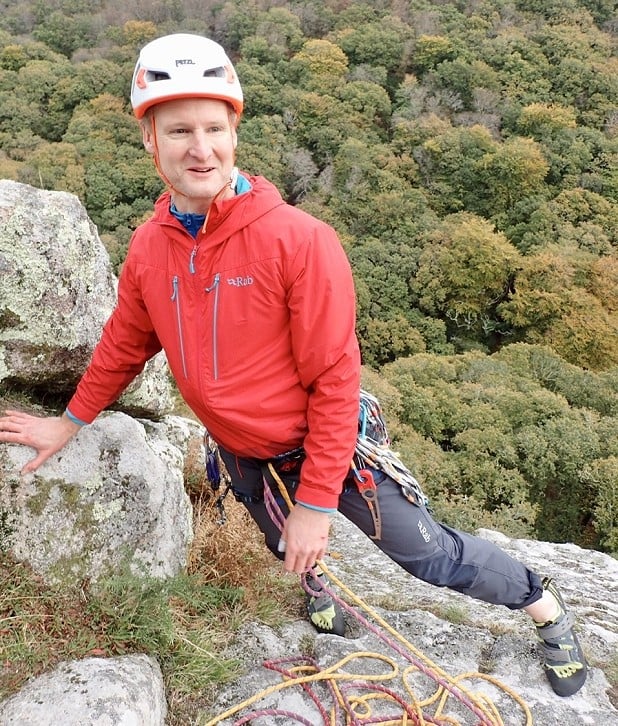
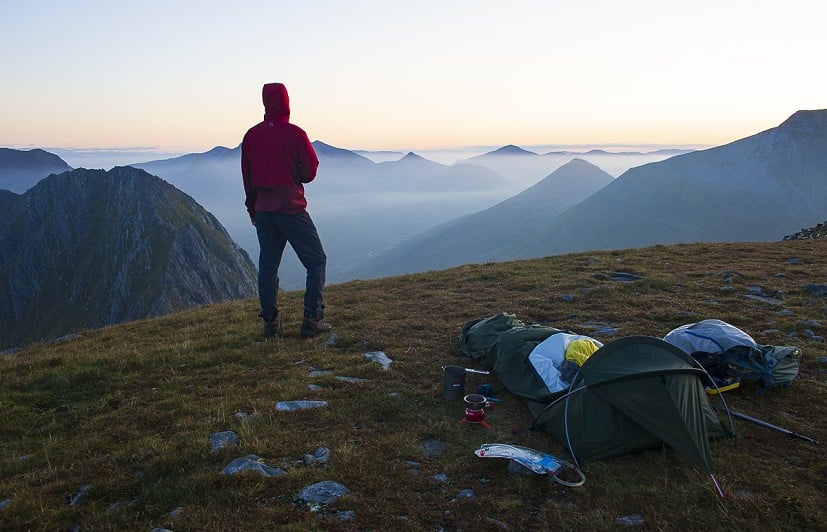
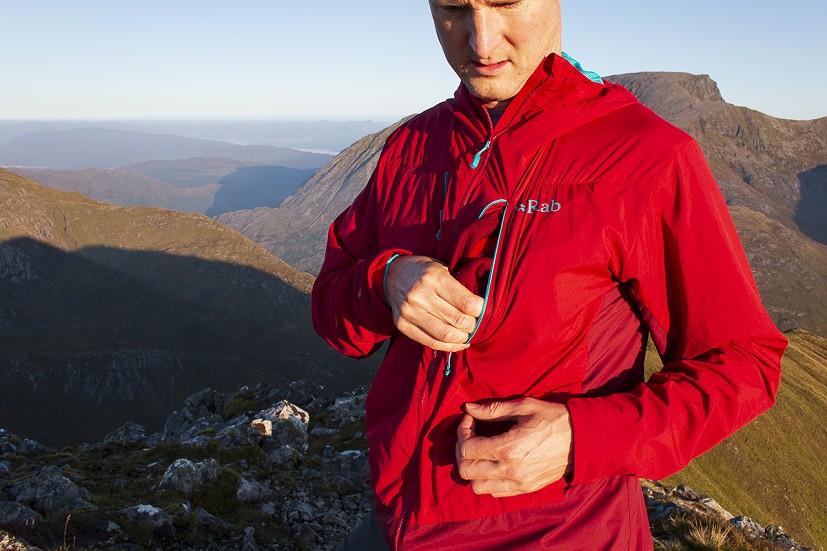
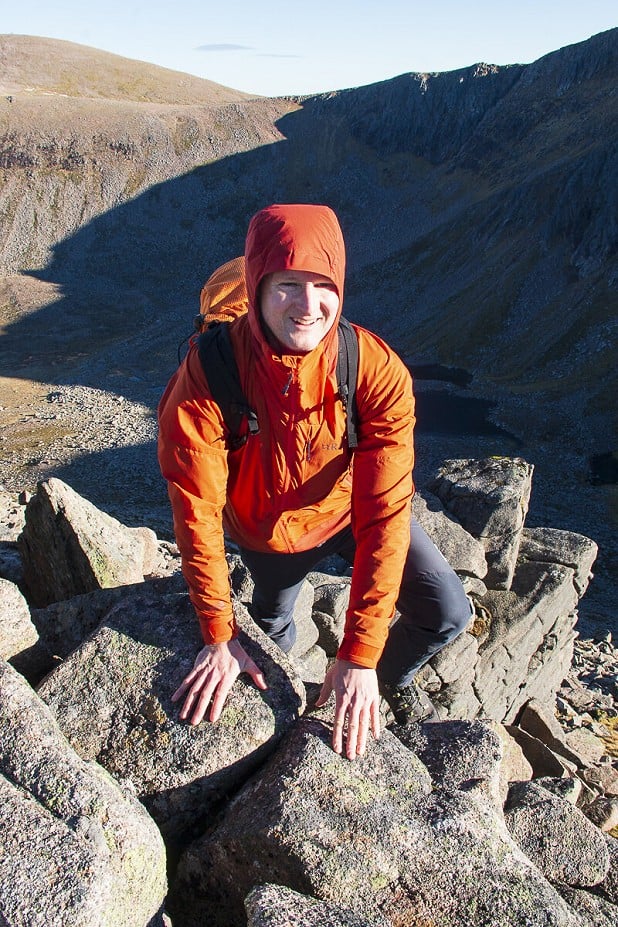
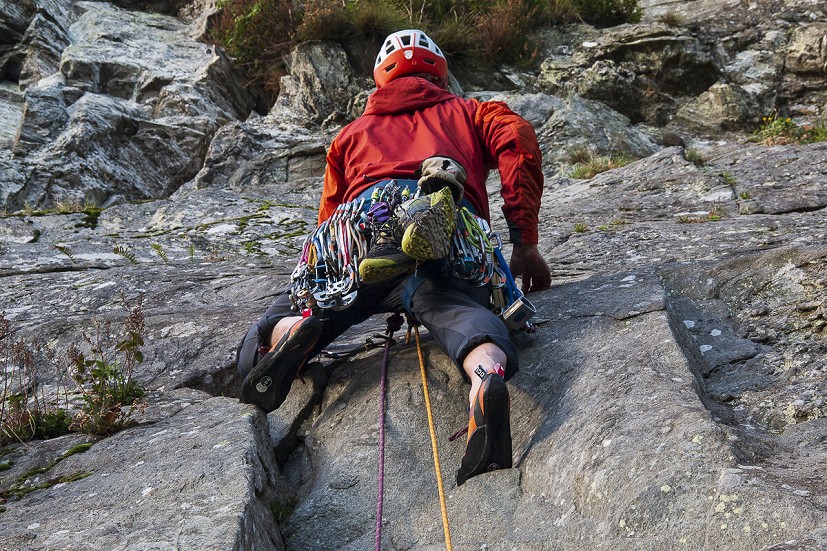
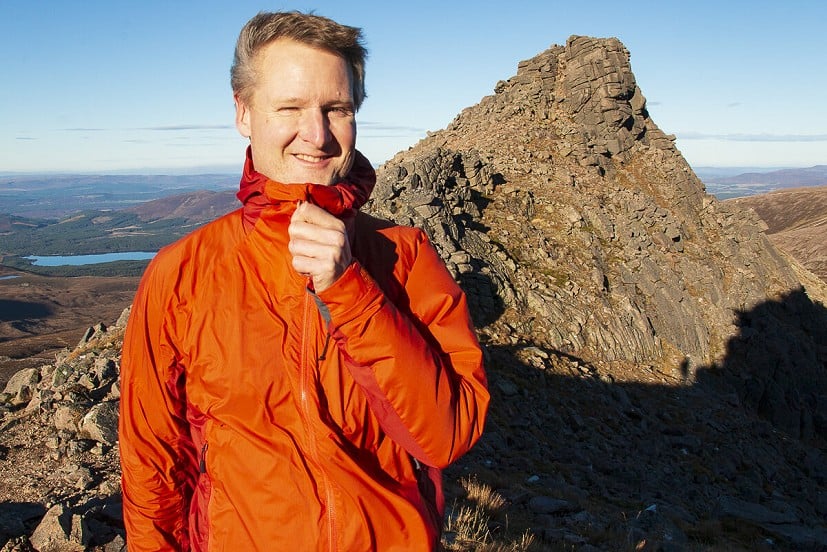
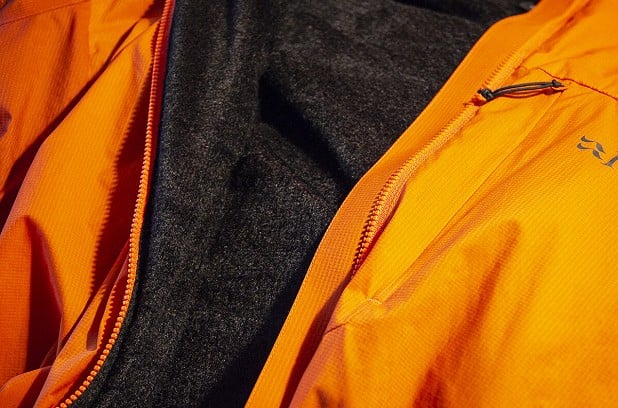
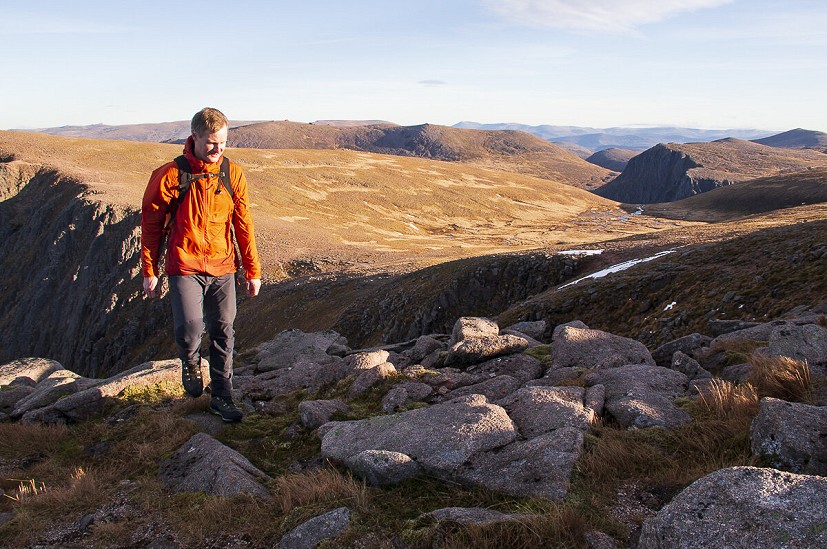
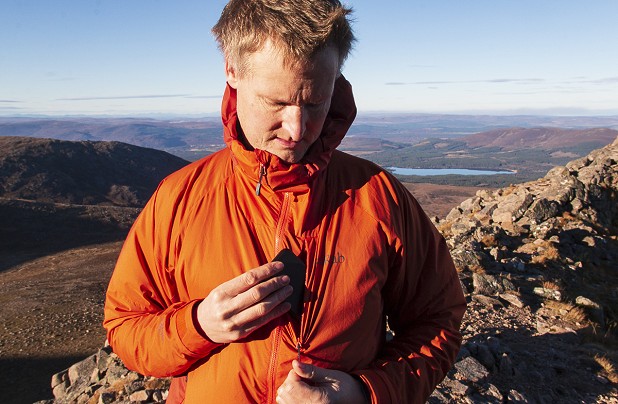
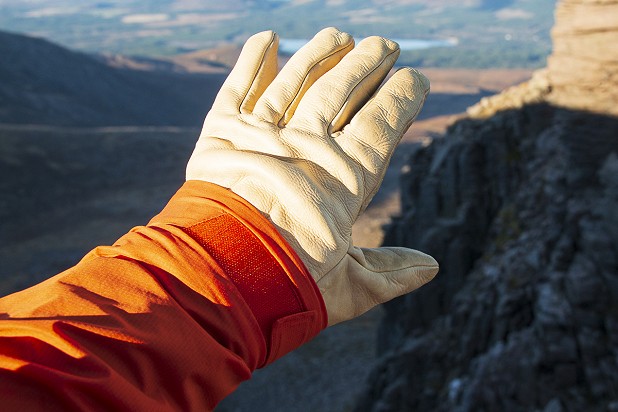

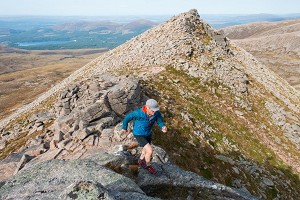
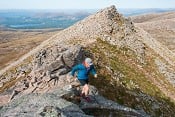



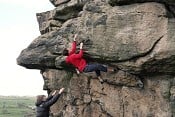

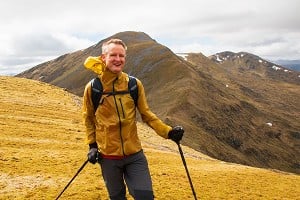
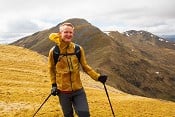

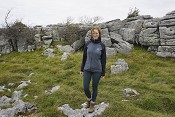
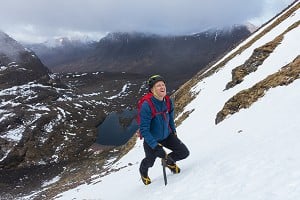
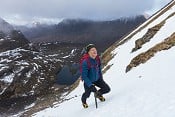

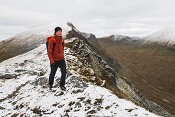


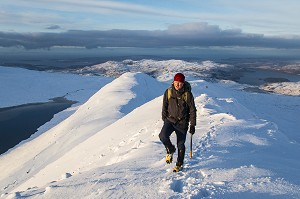
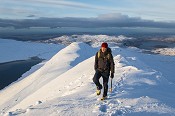
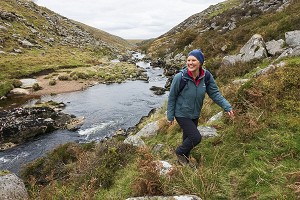
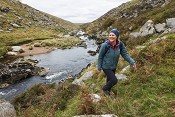
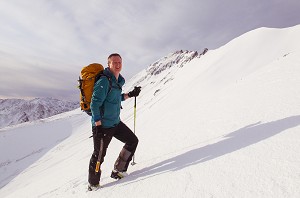
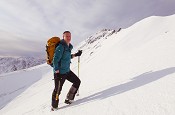
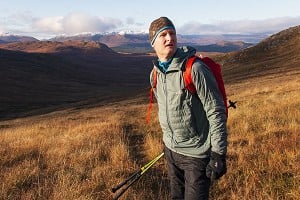

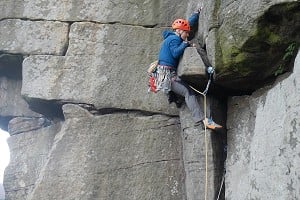
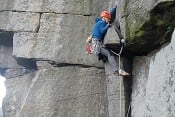
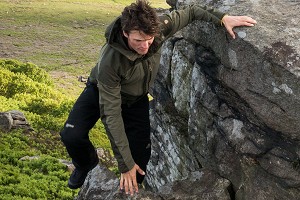
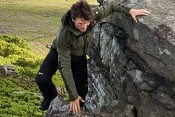
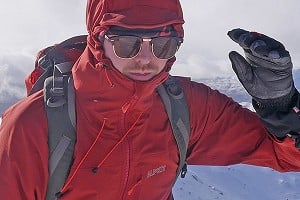

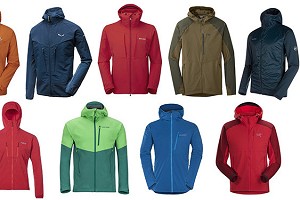
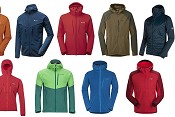
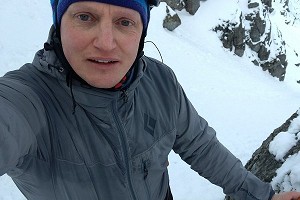



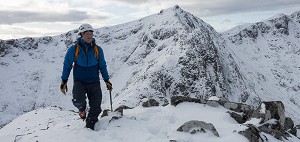

Comments
Thanks for this review Dan, interesting reading.
I've been trail running in the vr light since the summer has ended. By way of comparison I've used driclime and old vr alpine in the past. For me I like the design of the new vr light - even the cuff and hood which I see you are not keen on - however I'm yet to be convinced about the new wicking and air flow lining. I'm finding it hangs on to sweat close to the skin giving a cool clammy feel. With the old vr driclime style lining I find this wicks better and gives a drier microclimate next to the skin. I've yet to try the summit as I've not been out on cold enough conditions 👍
I don't have experience of the new VR range but I agree with Dan over the fit. Baggy at the front, but tight in the arms and shoulders, with quite a baggy lining. I've ended up shortening the lining in the arms of my original VR as it kept poking out of the cuff when I put it on. My old Marmot Driclime both fits better and wicks better.
I see even the ether driclime out of stock everywhere at the moment, I wonder if marmot have ditched it or not
Whilst not very fashionable I really think the pertex micro fleece i.e. vr, driclime, ultratherm, etc performs it's socks off to maintain a dry ish next to skin microclimate, dries in a jiffy and keeps the wind off perfect for damp windy humid British weather
Good review, thanks. Does the new VR stuff manage the same trick the previous generations had of somehow seeming to “out-breathe" the incoming moisture? Hard to explain but I found with my 2016 VR alpine it could be worn in pretty torrential rain as long as I was working hard and generating heat... The pertex equilibrium shell could be saturated but the lining seemed to hold the water away from skin, never feeling more than slightly damp and drying incredibly fast. Great for Scottish conditions! I'm curious as to whether the pertex quantum air can do the same - I believe it lacks the dernier gradient that was supposedly the key selling point of equilibrium. If Dan/anyone else knows please let me know.
Ive got a VR smock that is still going strong. Have replaced elastic and repaired bits, but still use it on regular basis. Must be 15 years old, probably first generation?
Also have a later version, but the early one seems better cut and lining is more comfortable, and I think wicks better.